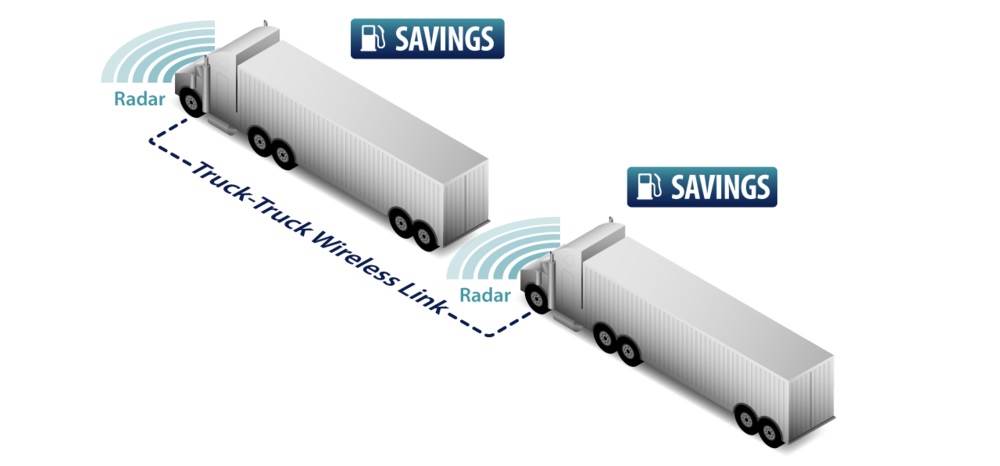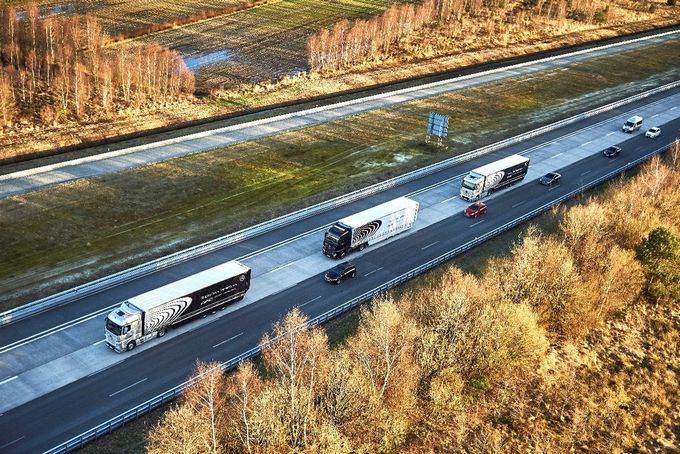This morning, a fleet of self-driving trucks arrived in the Dutch port of Maasvlakte, completing a cross-continent journey that organizers say demonstrates the future of transport in Europe. The experiment is known as the European Truck Platooning Challenge, and involved trucks from six different manufacturers traveling in miniature convoys. A driver in the lead vehicle of each convoy sets the speed and the route, while the other trucks follow automatically, a Wi-Fi connection keeping their braking and acceleration (but not steering) in sync.

This isnt a fully-automated system, but its a clear step toward this goal and has tangible benefits of its own. Platooning, as the method is known, could mean less congestion, fewer accidents, and reduced fuel consumption. A whitepaper from Dutch research firm TNO says that each truck in a platoon — both those following and those leading — uses on average 10 percent less fuel per journey. The same report notes that 90 percent of driving accidents are caused by human error, and although a full analysis of the safety of platooning has yet to be undertaken, the suggestion is that automation would lead to fewer crashes.

In the recently-completed challenge, trucks from firms including Daimler, Volvo, and Scania (a subsidiary of Volkswagen) competed, with each convoy setting off from a different location. The Scania group travelled the longest distance, driving more than 2,000 kilometers through Sweden, Denmark, and Germany to reach its destination in the Netherlands. The trucks did not travel in platoon for the entire journey — only on motorways when traffic conditions were normal — and each vehicle, even those following the lead truck, had a human driver on hand.
The Platoon Challenge has successfully demonstrated the potential of its technology, but now EU companies and governments have to tackle the fiddly details of regulation and implementation. Cross-border rules for self-driving trucks need to be established, and so does the protocol for setting up platoons. Can convoys be established in an impromptu manner mid-drive, for example, or will they always have to start and finish in the same location? Will drivers in following trucks be able to take a rest while their vehicle is chained to one in front?
The next step for those involved will be to discuss these matters in an informal meeting of the European transport council on April 14th. Companies and local governments in the US pursuing similar schemes will undoubtedly be watching with interest.






